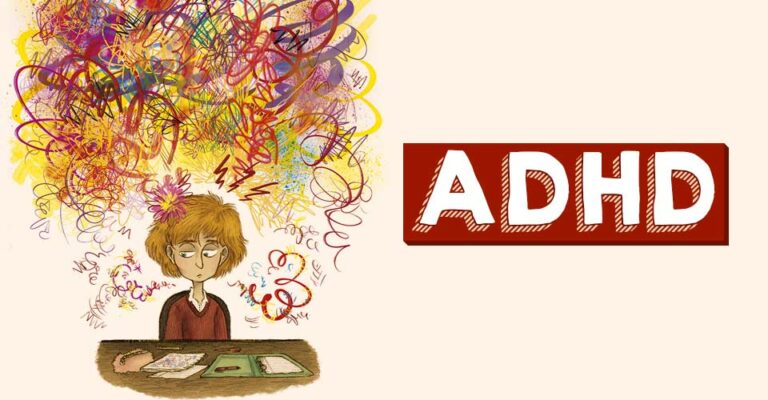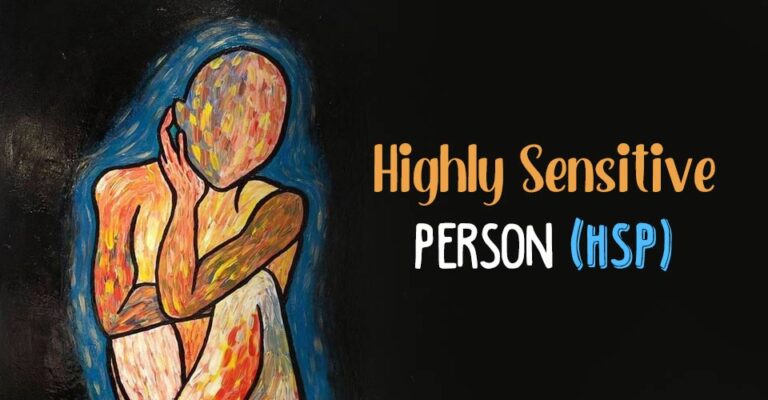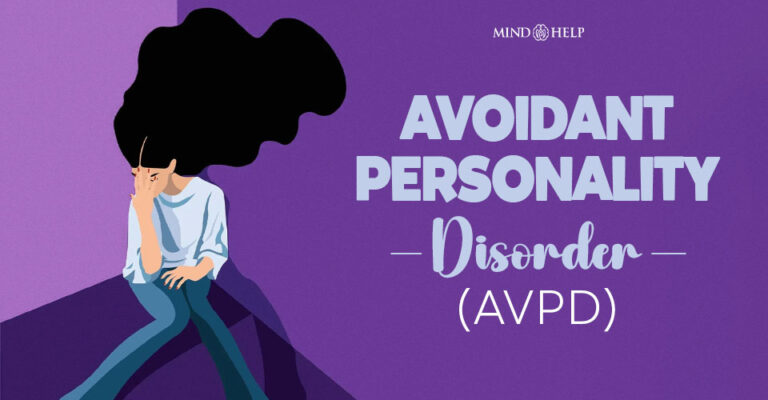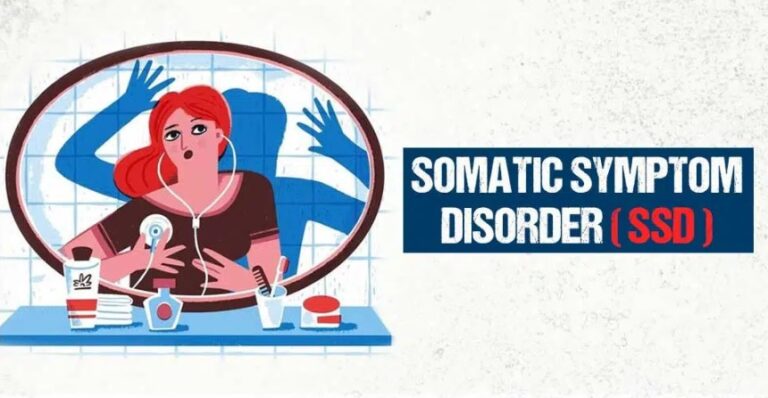Attention-deficit hyperactivity disorder or ADHD is a psychiatric disorder in which a person suffers from a lack of attention and hyperactivity. It is a very common disorder worldwide and can easily be managed with pharmacological and therapeutic treatment.
What Is Attention Deficit Hyperactivity Disorder?
Attention-deficit hyperactivity disorder (ADHD) is a neurodevelopmental condition that is characterized by an inability to sustain attention along with highly increased levels of activity. According to research, 1 Wilens, T. E., & Spencer, T. J. (2010). Understanding attention-deficit/hyperactivity disorder from childhood to adulthood. Postgraduate medicine, 122(5), 97–109. https://doi.org/10.3810/pgm.2010.09.2206 ADHD can often be lifelong, with its prominent symptoms starting in childhood and continuing till adulthood.
ADHD may result in disrupted social interactions, poor academic performance, and an overall decreased quality of life. It can however be effectively managed with medication, therapy, and adequate coping skills. However, if left untreated, people with ADHD can develop:
- Behavioral and conduct disorders
- Substance abuse disorders
- Antisocial and other personality disorders
In fact, severe ADHD is often linked to the long-term inability to work, increased car accidents, theft, assault, etc.
According to data from around the world 2 Magnus W, Nazir S, Anilkumar AC, et al. Attention Deficit Hyperactivity Disorder. [Updated 2022 May 8]. In: StatPearls [Internet]. Treasure Island (FL): StatPearls Publishing; 2022 Jan-. Available from: https://www.ncbi.nlm.nih.gov/books/NBK441838/ , the global prevalence of attention deficit hyperactivity disorder is about 18.3%. Studies suggest that ADHD exists in a 2:1 male-to-female ratio 3 Cabral, M., Liu, S., & Soares, N. (2020). Attention-deficit/hyperactivity disorder: diagnostic criteria, epidemiology, risk factors and evaluation in youth. Translational pediatrics, 9(Suppl 1), S104–S113. https://doi.org/10.21037/tp.2019.09.08 and affects about 3%-6% of the adult population in early childhood.
Case Example
From a very young age, Jia had been quite good at sports and physical activities but she could never get herself to sit down and study for a sustained period of time. It was next to impossible to hold her attention for more than a few minutes. Jia also had a habit of interrupting and shouting answers in class out of turn.
With age, Jia’s hyperactivity reduced. However, she constantly struggled to prioritize and organize her life and had a chronic habit of misplacing things such as her keys and phone. She was often running late to appointments and missing deadlines, as a result of which she had also received multiple warnings from her superiors at work.
Case Analysis
It is apparent that Jia had been suffering from lack of inattention and high activity levels since her childhood which continued into her adulthood. These symptoms are typical of attention deficit hyperactivity disorder or ADHD.
Symptoms Of ADHD
The primary signs of attention-deficit hyperactivity disorder are inattention and hyperactivity. Accompanying them are a bevy 4 Wilens, T. E., & Spencer, T. J. (2010). Understanding attention-deficit/hyperactivity disorder from childhood to adulthood. Postgraduate medicine, 122(5), 97–109. https://doi.org/10.3810/pgm.2010.09.2206 of other symptoms such as:
- Aggression
- Impulsivity
- Irritability
- Lack of restraint
- Persistent repetition of words or actions
- Absent-mindedness
- Difficulty in focusing and concentrating
- Forgetfulness
- Low moods like anxiety, boredom, etc.
- Mood swings, etc.
ADHD symptoms can present differently in different age groups.
Signs Of ADHD In Children
Attention-deficit hyperactivity disorder typically has its onset in childhood and late teenage years and it impacts everyday functioning, social relationships, academic performance, learning experiences, and extracurricular activities. Childhood ADHD symptoms up to the age of 16 can manifest as 5 Centers for Disease Control and Prevention. (2018). Symptoms and diagnosis of ADHD. Centers for Disease Control and Prevention. Available from: https://www.cdc.gov/ncbddd/adhd/diagnosis.html :
- Making careless mistakes in schoolwork and other tasks
- Having trouble concentrating on play and work
- Repeatedly interrupting when someone is talking
- Not being able to finish homework and chores or follow through with directions
- Failing to organize things properly
- Constantly losing stationery and other items
Signs Of ADHD In Adults
Attention-deficit hyperactivity disorder can manifest quite differently in adulthood 6 Gentile, J. P., Atiq, R., & Gillig, P. M. (2006). Adult ADHD: Diagnosis, Differential Diagnosis, and Medication Management. Psychiatry [Edgmont (Pa. : Township)], 3(8), 25–30. , although the basic symptoms of inattention and hyperactivity remain. Most of the time, it is a continuation of childhood ADHD.
Some of these symptoms are
- Taking a long time to get started on things/ procrastinating
- Failing to organize and prioritize tasks
- Having a very low tolerance for frustration and giving up easily
- Not being able to follow through with activities that require sustained mental effort
- Having a chaotic lifestyle
Attention-deficit hyperactivity disorder in adults has also been found to be associated with substance abuse and other comorbid mental disorders.
Interestingly, recent research 7 Ramtekkar, U. P., Reiersen, A. M., Todorov, A. A., & Todd, R. D. (2010). Sex and age differences in attention-deficit/hyperactivity disorder symptoms and diagnoses: implications for DSM-V and ICD-11. Journal of the American Academy of Child and Adolescent Psychiatry, 49(3), 217–28.e283. reveals that the types of ADHD vary to a certain extent based on gender. For instance, men tend to have symptoms related to hyperactivity, such as talkativeness, mood swings, always being on the go, etc. Women, on the other hand, have more ‘internalized’ symptoms that border on attention deficiency and cognitive shortcomings like disorganization, listening problems, etc.
What Causes ADHD?
Attention-deficit hyperactivity disorder is a multifactorial disorder and there is no single cause for it. However, certain risk factors 8 Soheilipour, F., Shiri, S., Ahmadkhaniha, H. R., Abdollahi, E., & Hosseini-Baharanchi, F. S. (2020). Risk factors for attention-deficit/hyperactivity disorder: a case-control study in 5 to 12 years old children. Medicine and pharmacy reports, 93(2), 175–180. https://doi.org/10.15386/mpr-1407 have been implicated in its origin.
Research 9 National Guideline Centre (UK). Evidence reviews for risk factors for ADHD: Attention deficit hyperactivity disorder: diagnosis and management: Evidence review A. London: National Institute for Health and Care Excellence (NICE); 2018 Mar. (NICE Guideline, No. 87.) Available from: https://www.ncbi.nlm.nih.gov/books/NBK578094/ attributes the potential causes of ADHD to
1. Genetics
According to a 2012 study 10 Thapar, A., Cooper, M., Jefferies, R., & Stergiakouli, E. (2012). What causes attention deficit hyperactivity disorder?. Archives of disease in childhood, 97(3), 260–265. https://doi.org/10.1136/archdischild-2011-300482 , attention-deficit hyperactivity disorder seems to share an “inherited liability” with other neurodevelopmental problems and psychiatric disorders. Its mean heritability is almost 74%.
2. Traumatic brain injury
Traumatic brain injury that brings about structural and functional changes 11 Shem-Tov, S., Chodick, G., Weitzman, D., & Koren, G. (2019). The Association Between Attention-Deficit Hyperactivity Disorder, Injuries, and Methylphenidate. Global pediatric health, 6, 2333794X19845920. https://doi.org/10.1177/2333794X19845920 in the brain can enhance the risk of ADHD.
3. Premature birth
12 Lindström, K., Lindblad, F., & Hjern, A. (2011). Preterm birth and attention-deficit/hyperactivity disorder in schoolchildren. Pediatrics, 127(5), 858–865. https://doi.org/10.1542/peds.2010-1279 Preterm and early-term birth can increase the risk of ADHD as per research.
4. Low birth weight
Research 13 Mick, E., Biederman, J., Prince, J., Fischer, M. J., & Faraone, S. V. (2002). Impact of low birth weight on attention-deficit hyperactivity disorder. Journal of developmental and behavioral pediatrics : JDBP, 23(1), 16–22. https://doi.org/10.1097/00004703-200202000-00004 shows that 13.8% of all ADHD cases can be attributed to low birth weight (LBW). Such cases are usually linked to preterm/ early-term birth.
5. Lead poisoning
Lead poisoning 14 Daneshparvar, M., Mostafavi, S. A., Zare Jeddi, M., Yunesian, M., Mesdaghinia, A., Mahvi, A. H., & Akhondzadeh, S. (2016). The Role of Lead Exposure on Attention-Deficit/ Hyperactivity Disorder in Children: A Systematic Review. Iranian journal of psychiatry, 11(1), 1–14. and contamination 15 Thapar, A., Cooper, M., Jefferies, R., & Stergiakouli, E. (2012). What causes attention deficit hyperactivity disorder?. Archives of disease in childhood, 97(3), 260–265. https://doi.org/10.1136/archdischild-2011-300482 by pesticides and fertilizers lead to cognitive impairment and, in some cases, trigger ADHD.
6. Unhealthy diet
According to a 2019 study 16 Del-Ponte, B., Quinte, G. C., Cruz, S., Grellert, M., & Santos, I. S. (2019). Dietary patterns and attention deficit/hyperactivity disorder (ADHD): A systematic review and meta-analysis. Journal of affective disorders, 252, 160–173. https://doi.org/10.1016/j.jad.2019.04.061 , consuming a lot of refined sugar and saturated fat can increase the risk of attention-deficit hyperactivity disorder.
7. Maternal consumption of substances during pregnancy
Studies find that stress and prenatal use of substances such as alcohol, tobacco, antidepressants, and other drugs 17 Forray A. (2016). Substance use during pregnancy. F1000Research, 5, F1000 Faculty Rev-887. https://doi.org/10.12688/f1000research.7645.1 by the expecting mother, expose the offspring in the womb to ADHD risks.
8. A family history of ADHD
If ADHD or learning problems run in a person’s family, it can make them more vulnerable to developing ADHD.18 Thapar, A., & Stergiakouli, E. (2008). An Overview on the Genetics of ADHD. Xin li xue bao. Acta psychologica Sinica, 40(10), 1088–1098. https://doi.org/10.3724/SP.J.1041.2008.01088
9. Psychosocial adversities
In other cases, a number of psychosocial adversities contribute to a person developing a. These include
- Bullying
- Poverty
- Domestic violence
- Family discord, etc.
Read More About Bullying Here
ADHD Diagnosis
According to the Diagnostic and Statistical Manual of Mental Disorders (DSM) 5, attention-deficit hyperactivity disorder can be diagnosed 19 Substance Abuse and Mental Health Services Administration. (2016). DSM-5 Changes: Implications for Child Serious Emotional Disturbance. Substance Abuse and Mental Health Services Administration (US). Available from: https://www.ncbi.nlm.nih.gov/books/NBK519712/table/ch3.t3/ if at least 7 symptoms from each of the categories of inattention and hyperactivity have been noticed for 6 months or more.
A clinician usually takes a detailed account of the symptoms and other relevant details from the patient as well as the informant (usually a parent or a teacher) before diagnosing attention deficit hyperactivity disorder. Some clinical assessments such as Conners Behavior Checklist 20 Gaba, P., & Giordanengo, M. (2019). Attention Deficit/Hyperactivity Disorder: Screening and Evaluation. American family physician, 99(11), 712. Available from: https://www.aafp.org/pubs/afp/issues/2019/0601/p712.html may also be used to accurately assess the symptoms.
ADHD Treatment
The mainstay of ADHD treatment is pharmacological therapy, which is sometimes supplemented by psychological treatment and training methods. These methods have been further elaborated on below:
Medication
Medication for attention-deficit hyperactivity disorder primarily aims to correct the neurotransmitter imbalances that cause the disorder, targeting the brain’s secretions of dopamine, serotonin, norepinephrine, etc. It involves the use of two types of drugs:
- Stimulants (like amphetamines and methylphenidates)
- Non-stimulants (like antidepressants and alpha agonists)
However, recently, experts have warned that pharmacological therapy in ADHD treatment is linked to several side effects 21 Stoffers, J., Völlm, B. A., Rücker, G., Timmer, A., Huband, N., & Lieb, K. (2010). Pharmacological interventions for borderline personality disorder. The Cochrane database of systematic reviews, (6), CD005653. https://doi.org/10.1002/14651858.CD005653.pub2 like cardiovascular diseases (CVD), weight gain, dizziness, substance abuse, sleep loss, and risks of dependency.
Psychotherapy
Therapeutic methods have been proven to be quite effective for ADHD. Some common therapies used in the treatment of attention-deficit hyperactivity disorder are:
- Cognitive-behavioral therapy 22 Safren, S. A., Otto, M. W., Sprich, S., Winett, C. L., Wilens, T. E., & Biederman, J. (2005). Cognitive-behavioral therapy for ADHD in medication-treated adults with continued symptoms. Behaviour research and therapy, 43(7), 831–842. https://doi.org/10.1016/j.brat.2004.07.001 [Read more]
- Trigeminal nerve stimulation system (for children) 23 Magnus W, Nazir S, Anilkumar AC, et al. Attention Deficit Hyperactivity Disorder. [Updated 2022 May 8]. In: StatPearls [Internet]. Treasure Island (FL): StatPearls Publishing; 2022 Jan-. Available from: https://www.ncbi.nlm.nih.gov/books/NBK441838/
- Parent-Child Interaction Therapy 24 Wagner, S. M., & McNeil, C. B. (2008). Parent-Child Interaction Therapy for ADHD: A Conceptual Overview and Critical Literature Review. Child & Family Behavior Therapy, 30(3), 231–256. https://doi.org/10.1080/07317100802275546
- Family therapy 25 Everett, C. A., & Everett, S. V. (2001). Family therapy for ADHD: Treating children, adolescents, and adults. Guilford Press. Available from: https://psycnet.apa.org/record/1999-04197-000
Other methods such as mindfulness-based therapy and self-control therapy may also be used.
The prognosis of attention-deficit hyperactivity disorder depends on the age of the patient as well as the timely and correct diagnosis of the disorder. 26 Magnus W, Nazir S, Anilkumar AC, et al. Attention Deficit Hyperactivity Disorder. [Updated 2022 May 8]. In: StatPearls [Internet]. Treasure Island (FL): StatPearls Publishing; 2022 Jan-. Available from: https://www.ncbi.nlm.nih.gov/books/NBK441838/ ADHD, however, may not be completely cured and persists to some extent throughout a person’s lifetime.
Nevertheless, the symptoms gradually decrease by about 50% in adulthood, enabling people with ADHD to achieve their educational and/or career goals. In some cases, ADHD goes away without treatment and this can be attributed to structural brain changes and occupational factors that do not require attention.
Takeaway
Attention-deficit hyperactivity disorder is a complex but common disorder that mostly affects children and youth. If untreated, its symptoms can grow more severe and negatively impact your mental and physical health, social relationships, financial prospects, and quality of life.
Thankfully, many treatment methods are available that can help a person effectively manage their ADHD symptoms and live a normal and happy life.
At A Glance
- Attention-deficit hyperactivity disorder (ADHD) is a neurodevelopmental disorder, characterized by attention deficiency and hyperactivity.
- It is most common in children and young adults.
- There are three types of ADHD.
- The symptoms of attention-deficit hyperactivity disorder include impulsivity, restlessness, forgetfulness, mood swings, motor dysfunction, irritability, and aggression.
- It can be caused by brain injury, premature birth, low birth weight, lead poisoning, a family history of ADHD, etc.
- Attention-deficit hyperactivity disorder can be easily treated with therapy and medication.
Frequently Asked Questions (FAQs)
1. Is ADHD a mental illness?
Attention deficit hyperactivity disorder (ADHD) is one of the most common mental disorders affecting children.
2. Who are some famous people with ADHD?
Michael Phelps, Karina Smirnoff, Howie Mandel, Adam Levine, Justin Timberlake, Paris Hilton, and Simone Biles are some famous people who are apparently diagnosed with ADHD.
3. Why is ADHD often misdiagnosed?
Attention-deficit hyperactivity disorder mostly occurs in children with symptoms overlapping with other disorders like anxiety, intellectual disabilities, etc. The tender age of its sufferers and its clinical misidentification often results in misdiagnosis. Cultural factors may also play a role when assessing symptoms of ADHD.
4. What are the signs of ADHD in women?
ADHD is less common among women but involves distinct symptoms 27 Quinn, P. O., & Madhoo, M. (2014). A review of attention-deficit/hyperactivity disorder in women and girls: uncovering this hidden diagnosis. The primary care companion for CNS disorders, 16(3), PCC.13r01596. https://doi.org/10.4088/PCC.13r01596 . Research suggests that women present more internalizing symptoms of inattention rather than externalized ones. It may be difficult to identify ADHD in women due to cultural norms.














